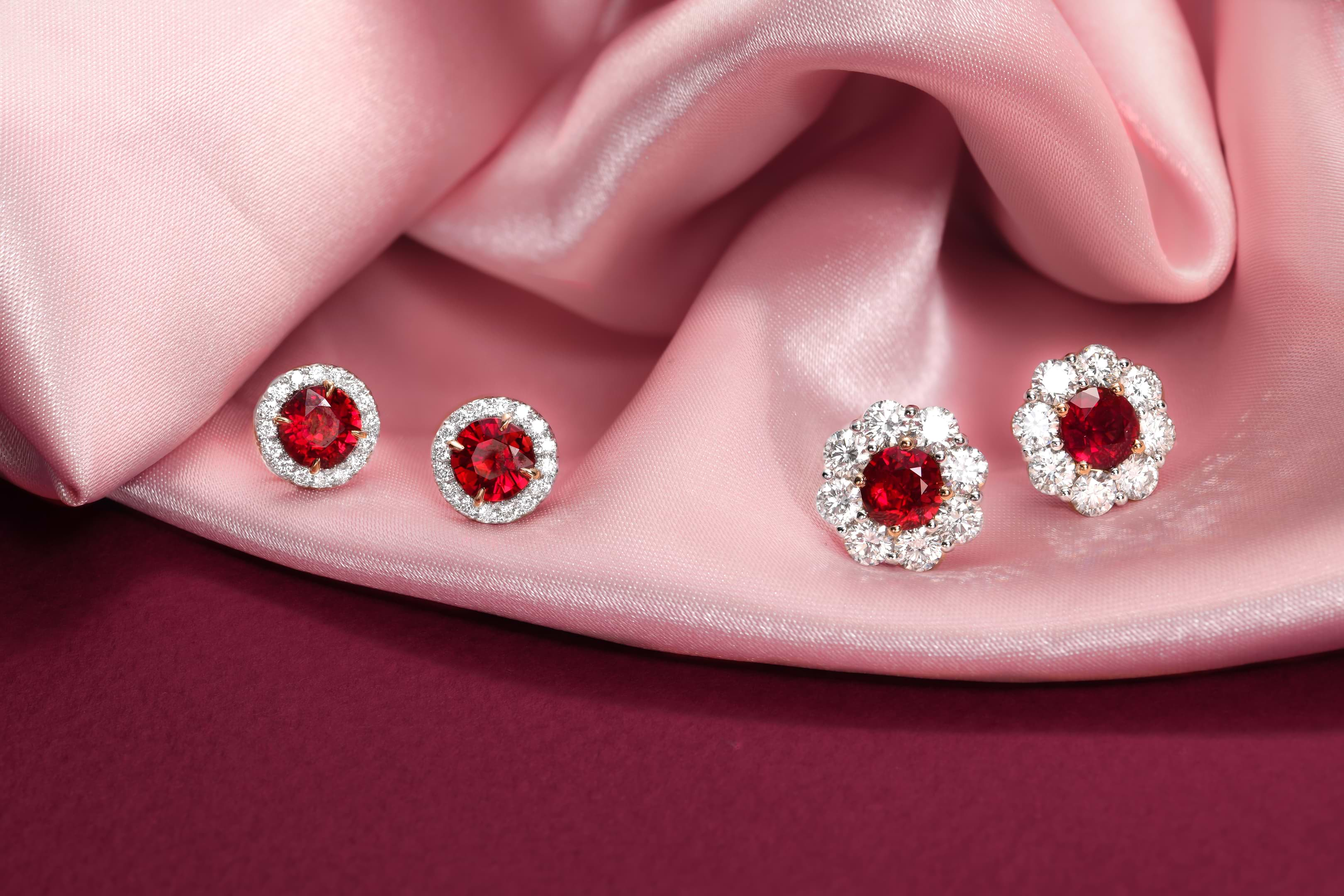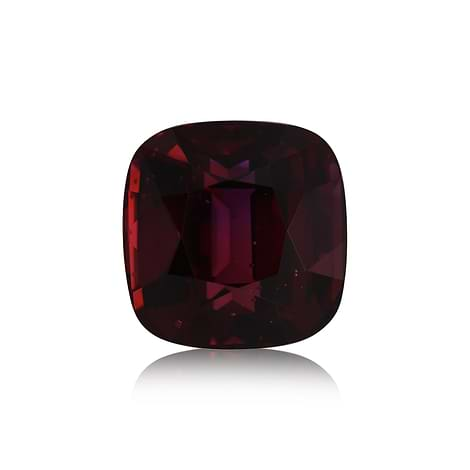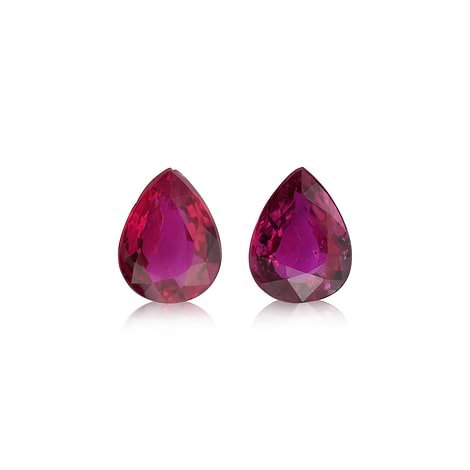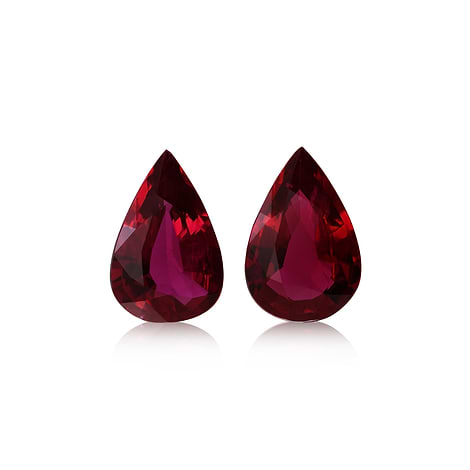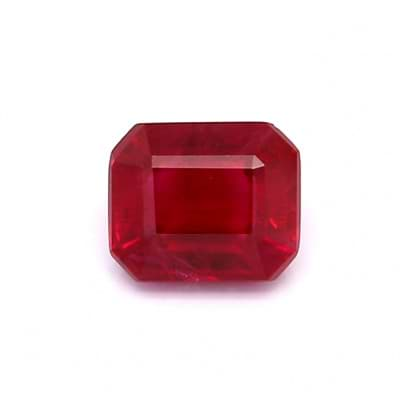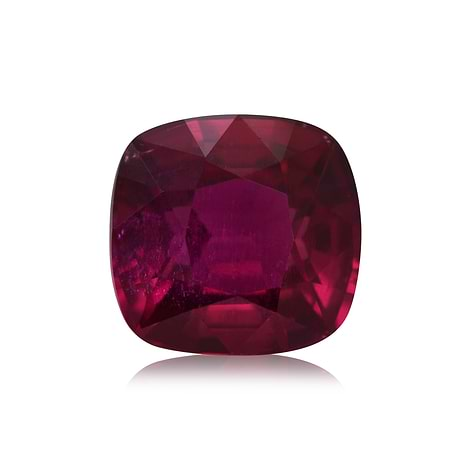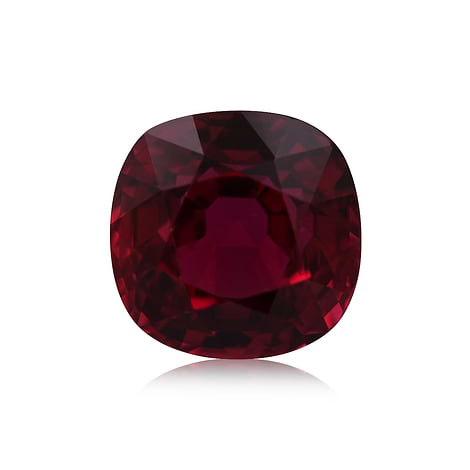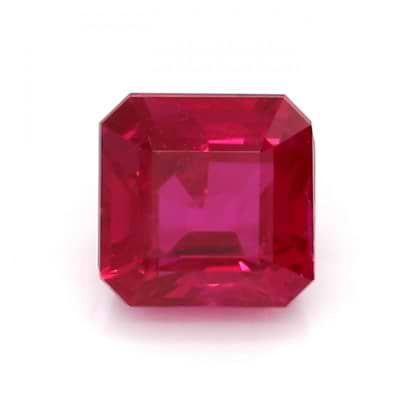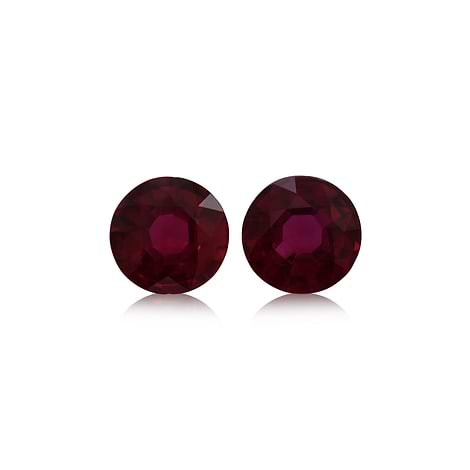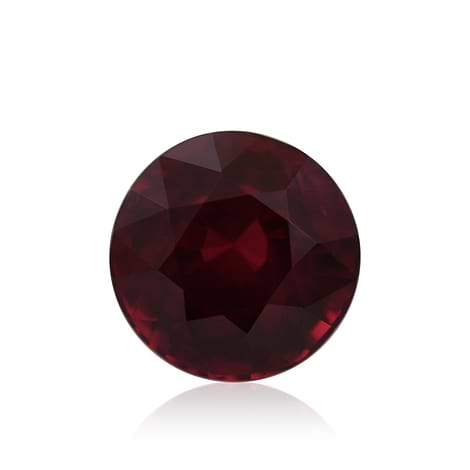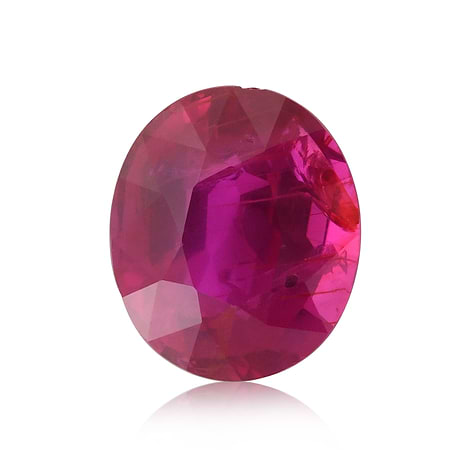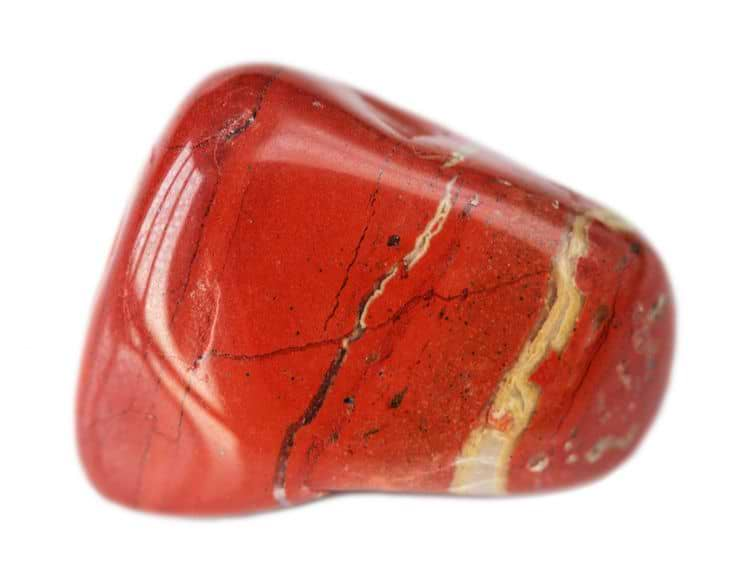Colorful gemstones have captivated jewelry lovers for centuries. Stones like ruby have come to symbolize luxury for their rarity, durability, and beauty. But wherever there are precious genuine gemstones, fakes cannot be far behind. There are synthetic rubies, so let’s discover how to tell if a ruby is real.
Real rubies are coveted for their intense red hue. While there are other red gemstones to be sure, no other natural jewel has the particular crimson tint that rubies boast. These stones are a member of the corundum family. But it’s the addition of chromium in the mineral that causes it to take on a rosy hue. Those who understand the mineral corundum will recall that it’s a superbly hard material. Real ruby will be durable for decades and take a high polish on the cutting wheel. Theses gems are the next hardest substance to diamond so you can be sure it will sparkle plenty and for a long, long time.
Fortunately there are techniques for verifying your ruby’s authenticity. So let’s dive right in and find out how to tell if a ruby is real.
What Makes Rubies Special?
Over its long history by those who could afford a real ruby, it took on attributes from its early collectors. Ancient ruby afficionados attributed power, and intense emotions to this vivid stone. Early cultures who collected this stone attributed symbols of strength and life. That’s easily understood since the intense red tone reminded them of blood—so they thought ruby was as powerful as the blood that flowed through their veins.
When real rubies were first discovered, the came from Mogok, Burma, now called Myanmar. Today they’re found in various parts of the world. But in their initial findings, it was difficult to source these exotic stones.
Key Characteristics of a Real Ruby
The rarest of the rare rubies still hail from Myanmar. But other red stones made prospectors wonder how to tell if a ruby was real. And of those gemstones, those with highly desirable colors called Pigeon Blood are most coveted. Collectors love that specific tint and it’s not easy to find. This color represents the epitome of collectability. This ruby is real of course. Pigeon Blood ruby is described as having a deep, intensely saturated red hue that often displays slight glints of purple in the coloration.
Since earth-mined rubies are all original, their colors can vary somewhat. They may display lighter or deeper-toned red. They may also exhibit very slight glimpses of secondary hues, like orangish red or blue and purple glints. It’s all part of the quest to learn how to tell if a ruby is real.
The Mohs scale is reliable for identifying a mineral’s relative hardness. 10 is the hardest of all-natural substances on earth, and that ranking belongs only to diamonds. The next hardest substance, ranking 9, belongs to ruby and sapphire, which belong to the corundum family of minerals. Only a diamond is harder than corundum.
One of the methods a gemologist or scientist uses in confirming if the ruby is real is by examining its internal inclusions. Today, great advancements have been made in gemstone research, allowing professionals to also determine the origin of gems like rubies. This is key since rubies from different areas have distinct values. Burmese (Myanmar) rubies command the highest prices.
Some common internal characteristics for real ruby are silk-like fibers, crystals, and thin needle-like inclusions. Ruby is often seen with cracks or feathers in its internal structure. Cavities are a frequent observation as well as natural inclusions called fingerprints -- so-called for their curvilinear patterns found on human fingerprints.
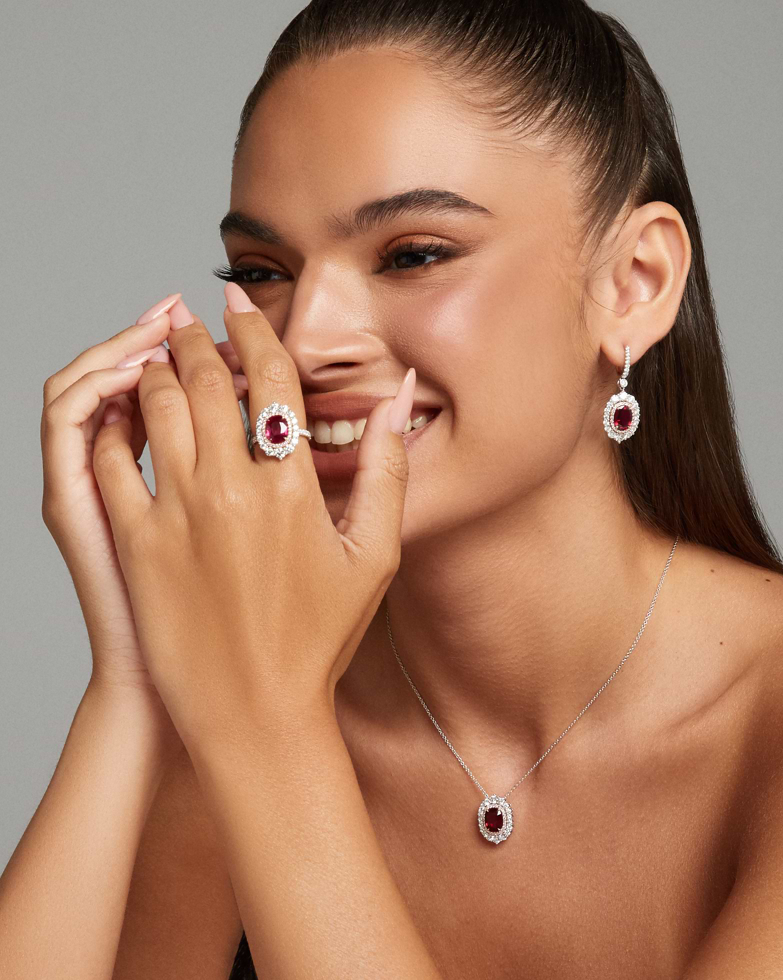
Methods to Test if a Ruby is Real
A visual inspection is the first step in determining if a ruby is real. Observing the color, its hardness by using a Mohs tester, and checking for expected inclusions is the first level of examination. Some ruby inclusions are so prominent that they can be seen with the naked eye. More often a person requires a 10X jewelers loupe for a clear internal exam.
A trained professional can differentiate between natural inclusions and those created by a lab grown, or fake ruby. As contrasted to naturally appearing inclusions, a created ruby has its unique inclusion profile.
Under microscopic inspection, man-made rubies may display gas bubbles internally. It’s part of the growth process in a lab. There might be color zoning—bands of lighter or no color along with deeper hues. While that can occur naturally—the natural version always has straight lines, while the man-made ruby has curved bands.
It’s quite normal to subject rubies to UV lighting. This should cause most rubies to fluoresce. That is part of a normal inspection. However, some synthetic rubies also fluoresce using this procedure—so it’s definitive of ruby but not definitive of it being natural.
Scratch test for ruby verification sounds destructive, doesn’t it? It certainly can be, so we recommend proceeding with caution. If you have an uncut ‘rough’ ruby crystal, the scratch test is easier since that ruby will be cut away in polishing anyway. Whether it’s a raw (rough) ruby or a faceted ruby stone, make sure you have permission from the owner if it’s not your property.
When scratch testing on a polished ruby, the safest area to conduct the scratch test is on the underside of the stone (called the pavilion) or close to the girdle. These areas are usually well hidden in the mountings.
Learn more about Ruby as a birthstone
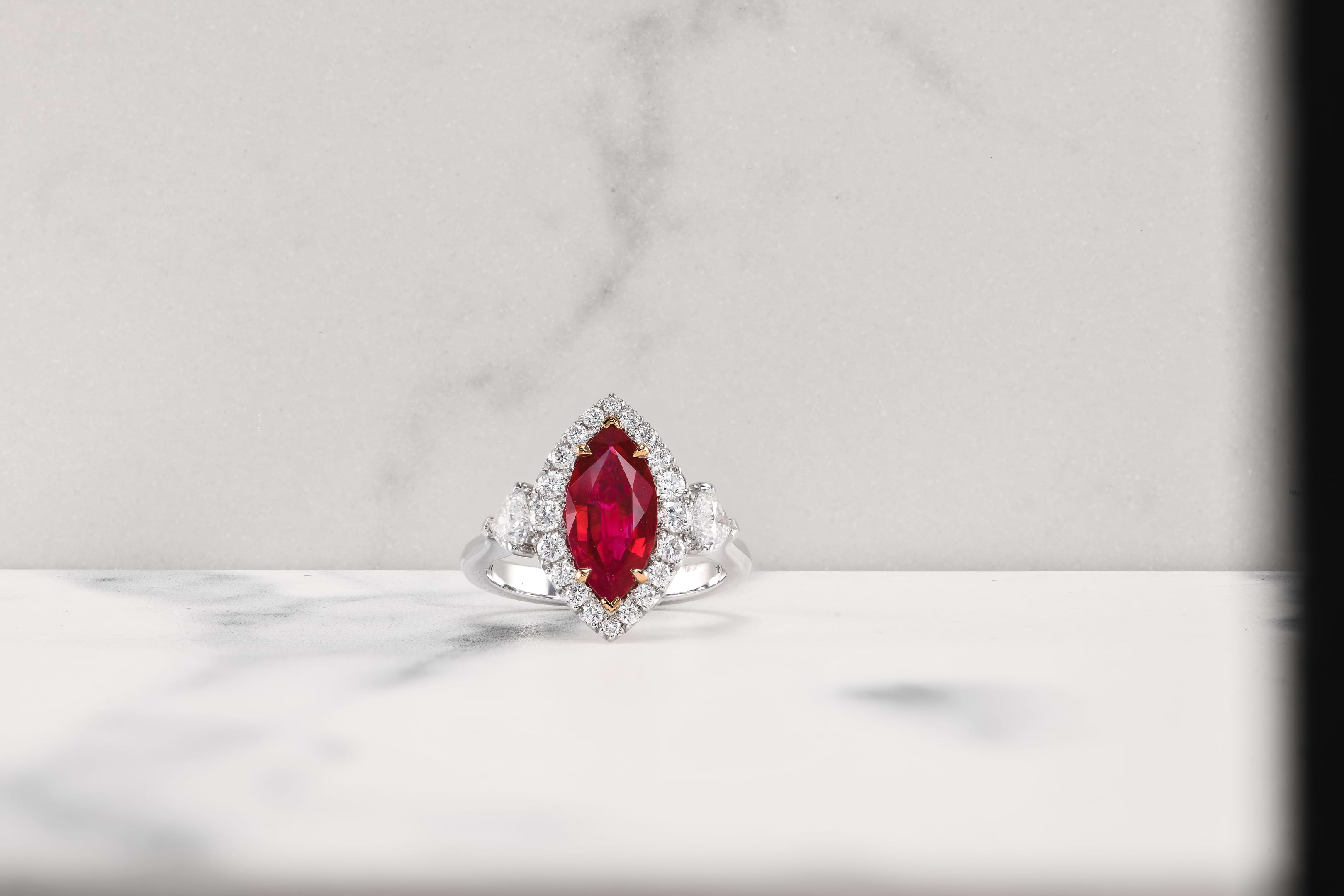
We know that rubies ranked 9 on the Mohs scale, so we can select a test stone with a lower Mohs rating, as well as a diamond. You can also test with another ruby. The first test with a stone that’s lower on the Mohs scale. It should not be able to scratch—since rubies are harder. You can make a discreet test with another ruby—and it should leave a mark. Simply scratch a very minute area to get results.
A tiny area will suffice—you can use a jewelers 10X loupe see the area you’ve tested. Another ruby or a sapphire will leave a slight mark because corundum (ruby or sapphire) can scratch corundum. If you test using a diamond, you will definitely get a small mark because the diamond is harder than the ruby.
When it comes to pricey rubies, you should consider sending your natural ruby to a reputable gem lab like GIA or any other professional grading lab. Their extensive, accurate testing methods ensure the correct result, including a laboratory report created just for your stone. It is the most fail-safe way to confidently authenticate your ruby. Many labs are equipped to identify the ruby’s origin today. That’s a key component in establishing value of natural rubies. Certification removes any question about your stone.
Difference Between Natural, Synthetic and Treated Rubies
With so many ruby types available, it’s easy to get confused as to what you really have. A natural ruby is an earth-mined stone that comes from the ground. A synthetic ruby was created in a lab to replicate a natural ruby—but it is all man-made. A treated ruby is an earth-mined ruby that has undergone one or more treatments to enhance its color and clarity, making it much more salable.
Professional Authentication
You’ll never regret having a professional examine your ruby to affirm its authenticity. A graduate gemologist, a gemstone appraiser, or a professional gem lab will provide you with peace of mind as to the stone you have. Their expertise helps establish exactly what stone you have and how to properly insure it. Should you ever sell your ruby, the certification provides the foundation for pricing it appropriately.
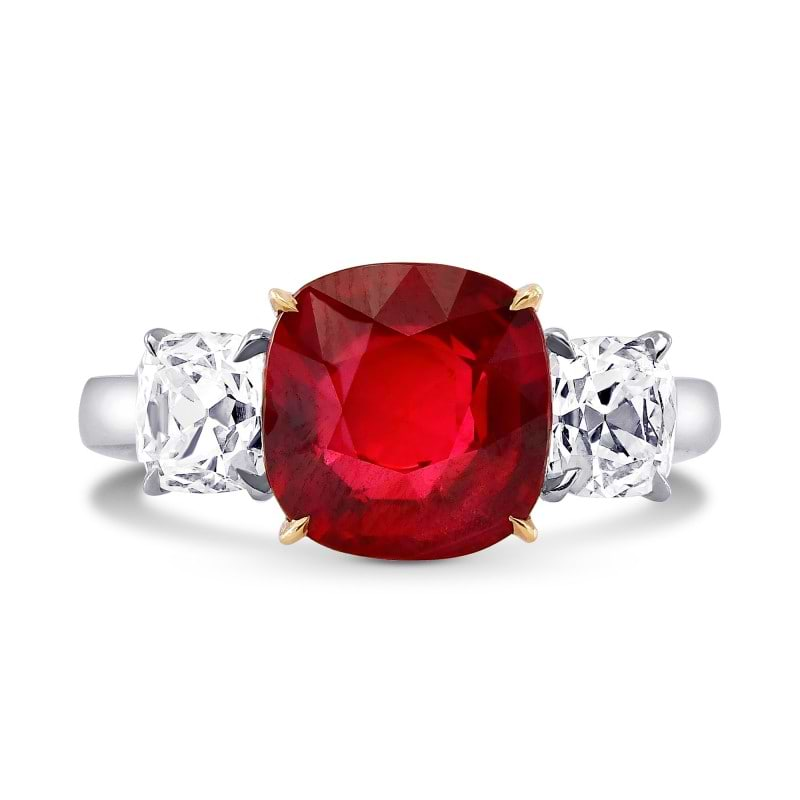
FAQs
What are the most common inclusions found in real rubies?
Needles and silk are often seen in natural ruby.
Is a UV light test reliable for identifying real rubies?
It’s used to identify traits in a natural ruby, but synthetic rubies can also fluoresce under UV light—so it cannot always separate natural from created ruby.
Are all rubies that have a red color real?
No, synthetic or imitation ruby are bright red too.
Can real rubies be damaged by heat or chemicals?
Things like acetone, alcohol and some detergents can damage rubies. Extreme heat can make rubies prone to chipping.
What are the main differences between rubies and red spinel?
The big difference between ruby and spinel is the hardness. Ruby is a harder stone. Also rubies are more prone to natural inclusions, with less inclusions in spinel.
How do treatments affect the value of a ruby?
Most treatments are industry accepted as they improve the color and clarity of rubies. But it must be disclosed since non-treated natural ruby is always more valuable.
Conclusion
Ruby is one of the most desirable colored stones ever found. For centuries they were only recovered from Burma, (Myanmar). Rubies from this region are treasured. Today other parts of the world produce ruby making it more accessible to consumers. With so many created rubies available, it’s essential to have your ruby examined by a qualified professional to authenticate it as a natural ruby. If you love your ruby and want to keep it, it’s wise to have it a properly graded to determine its authenticity and thus its value.
